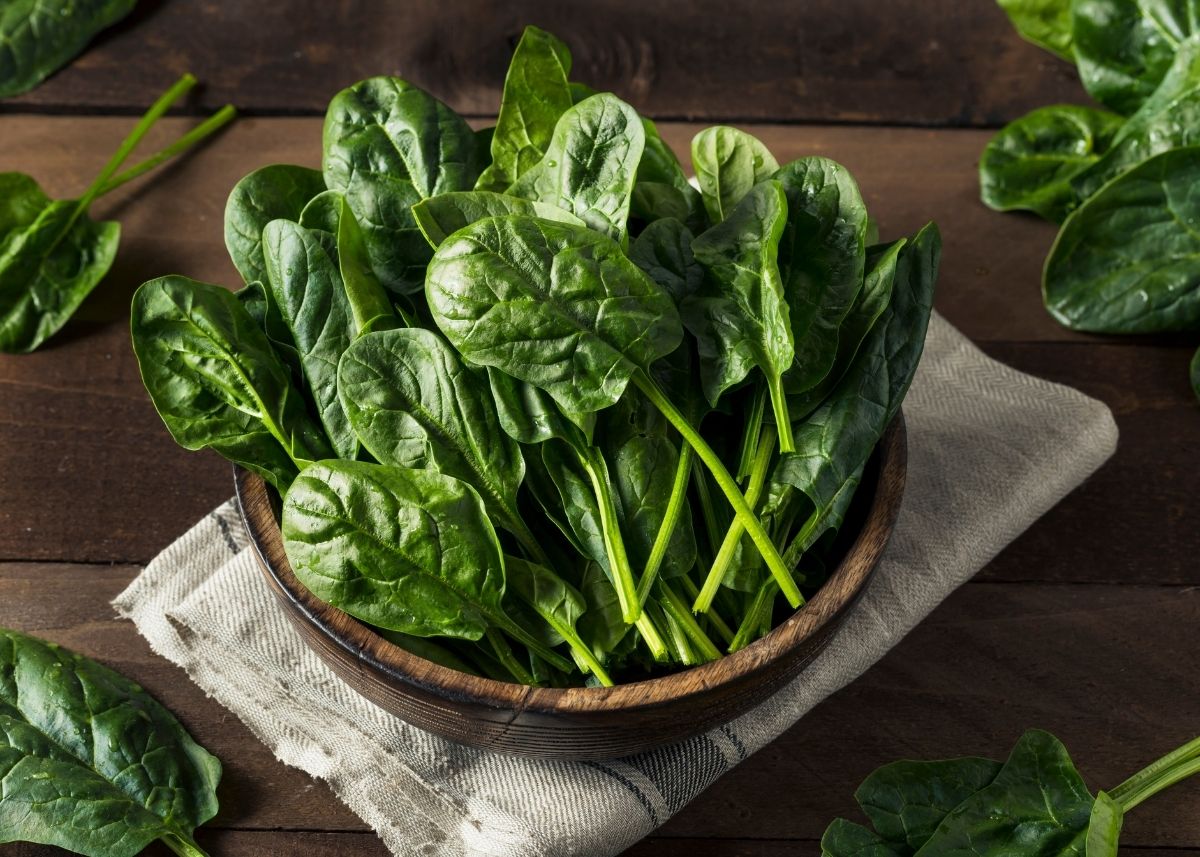

Articles
How To Store Fresh Spinach
Modified: August 16, 2024
Learn the best methods for storing fresh spinach to keep it crisp and flavorful for longer. Follow our expert articles and tips for preserving your leafy greens.
(Many of the links in this article redirect to a specific reviewed product. Your purchase of these products through affiliate links helps to generate commission for Storables.com, at no extra cost. Learn more)
Introduction
Welcome to our comprehensive guide on how to store fresh spinach! Whether you’re growing spinach in your garden or buying it from the grocery store, knowing how to properly store it is essential to preserve its freshness and flavor. Spinach is a versatile and nutrient-packed leafy green that can be used in various culinary dishes, and by following the right storage methods, you can enjoy its taste and benefits for longer.
Spinach is a delicate vegetable that is prone to spoiling quickly if not stored properly. It is crucial to store spinach in a way that maintains its vibrant color, crisp texture, and nutrient content. This article will provide you with general guidelines and various methods for storing fresh spinach, so you can make the most out of this nutritious green leafy vegetable.
Proper storage not only helps to maintain the quality of spinach but also prevents wastage and saves money. No one wants to throw away wilted or spoiled spinach that could have been enjoyed in a delicious salad, stir-fry, or smoothie. By implementing the tips and techniques shared here, you can extend the shelf life of your fresh spinach, and ensure that it stays fresh and ready to use whenever you need it.
So, without further ado, let’s dive into the world of spinach storage and discover the best ways to keep this leafy green at its optimum freshness!
Key Takeaways:
- Proper storage of fresh spinach is essential to maintain its freshness, nutritional value, and flavor. By following specific storage methods and general guidelines, you can extend the shelf life of spinach and reduce food waste.
- Refrigerating, blanching and freezing, vacuum-sealing, and preserving spinach in oil are effective methods for storing fresh spinach. Each method offers unique benefits for preserving the color, texture, and nutrients of spinach, allowing you to enjoy its freshness for an extended period.
Read more: How To Store Washed Spinach
Why is Proper Storage Important?
Proper storage is crucial when it comes to preserving the freshness, nutritional value, and flavor of fresh spinach. Here are a few key reasons why it is important to store spinach correctly:
- Preserves Freshness: Spinach is a delicate leafy green that tends to wilt and spoil quickly if not stored properly. By applying the right storage techniques, you can extend its shelf life and maintain its crispness and vibrant color for a longer period of time.
- Retains Nutritional Value: Spinach is packed with essential vitamins, minerals, and antioxidants that provide numerous health benefits. However, improper storage can lead to nutrient loss. Exposure to light, heat, and air can degrade the nutritional value of spinach. Storing it correctly helps to preserve its nutrient content, ensuring that you reap all the health benefits when you consume it.
- Prevents Spoilage: Storing spinach incorrectly can speed up its deterioration and promote bacterial growth, leading to spoilage and a foul odor. By employing proper storage techniques, you can minimize the risk of spoilage and ensure that your spinach stays fresh and safe to consume.
- Reduces Food Waste: Wasted food is a significant issue, both economically and environmentally. When spinach is not stored properly and goes bad, it often ends up in the trash. By storing spinach correctly, you can maximize its shelf life and reduce food waste, saving both money and resources.
- Cost-Effective: If you’re buying spinach in bulk or harvesting it from your garden, knowing how to store it properly can help you make the most out of your supply. By preventing spoilage and extending its freshness, you can save money by using the spinach before it goes bad.
By understanding the importance of proper storage, you can ensure that your spinach stays fresh and flavorful, maximizing its nutritional benefits and minimizing unnecessary waste.
General Guidelines for Storing Fresh Spinach
Before diving into specific storage methods, it’s important to follow some general guidelines when it comes to storing fresh spinach. These guidelines will help to maintain its freshness and quality for as long as possible. Here are some key points to keep in mind:
- Choose Fresh Spinach: Start with fresh, high-quality spinach. Look for leaves that are vibrant green, crisp, and free from any wilting or yellowing.
- Clean and Dry: Thoroughly wash the spinach leaves to remove any dirt, debris, or pesticides. Pat them completely dry using a clean kitchen towel or salad spinner. Excess moisture can lead to quicker spoilage.
- Avoid Bruising: Handle the spinach leaves with care to avoid bruising or damaging them. Bruised leaves deteriorate faster and can impact the overall quality of the spinach.
- Trim the Stems: If your spinach came with stems, trim them off as they can contribute to wilting and spoilage. Only keep the tender leaves for storage.
- Store in Moisture-Proof Bags: Opt for moisture-proof bags or containers to store your spinach. This helps to prevent excess moisture from accumulating, which can lead to mold growth and spoilage.
- Avoid Direct Sunlight: Store spinach in a cool and dark place away from direct sunlight. Exposure to light can cause the leaves to wilt and degrade more quickly.
- Do Not Wash Before Storage: It’s best to store spinach unwashed until you’re ready to use it. Washing it before storage can introduce moisture and accelerate spoilage.
- Check Regularly: Keep an eye on your stored spinach and check it regularly for any signs of wilting or rotting. Remove any damaged leaves to prevent them from affecting the rest of the spinach.
Following these general guidelines will provide a solid foundation for storing fresh spinach. Now, let’s dive into specific storage methods that you can use to keep your spinach fresh and delicious for longer.
Methods for Storing Fresh Spinach
There are several methods you can employ to store fresh spinach, depending on your preference and the duration for which you need to store it. Here are four popular methods for storing fresh spinach:
- Refrigerating Spinach: The refrigerator is the most common and convenient storage option for fresh spinach. Place the unwashed and dry spinach leaves in a sealed plastic bag or airtight container lined with a paper towel to absorb any excess moisture. Store it in the crisper drawer of your refrigerator, which has a slightly higher humidity level. This method can keep your spinach fresh for up to a week, but it’s best to consume it within a few days for the best quality.
- Blanching and Freezing Spinach: If you have a large supply of spinach that you’d like to store for a longer period, blanching and freezing it is a great option. Start by blanching the spinach in boiling water for a brief period, then quickly transfer it to an ice bath to stop the cooking process. Drain and squeeze out excess water, then portion the blanched spinach into freezer-safe bags or containers. Label them with the date and store in the freezer for up to six months. This method helps to preserve the color, texture, and nutrients of the spinach, making it an excellent choice for long-term storage.
- Storing Spinach in Vacuum-Sealed Bags: Using a vacuum sealer is another effective method to store fresh spinach for an extended period. Place the cleaned and dried spinach leaves into vacuum-sealed bags or containers, and use a vacuum sealer to remove excess air and seal them tightly. The airtight environment created by the vacuum sealer helps to prolong the freshness of the spinach by minimizing oxygen exposure, which can cause decay. Vacuum-sealed spinach can last for up to two weeks in the refrigerator.
- Preserving Spinach in Oil: If you love the flavor of sautéed spinach or want to have it readily available for cooking, preserving spinach in oil is a fantastic option. Blanch the spinach briefly in boiling water, then shock it in an ice bath to preserve the color. Drain and squeeze out excess water. Next, chop or tear the blanched spinach and mix it with olive oil. Store the spinach-oil mixture in a glass jar in the refrigerator. This method not only keeps the spinach fresh but also infuses the oil with its flavor. Use the preserved spinach within a week or two for the best results.
Choose the storage method that suits your needs and the quantity of spinach you have. These methods will help to extend the shelf life of your spinach, allowing you to enjoy its freshness and nutritional benefits for an extended period.
Refrigerating Spinach
Refrigerating spinach is the most common and convenient method of storing fresh spinach. By following a few simple steps, you can keep your spinach fresh and crisp for several days. Here’s how to do it:
- Preparation: Start by cleaning the spinach leaves thoroughly. Remove any dirt or debris and rinse them under cool running water. After washing, gently pat the leaves dry using a clean kitchen towel or a salad spinner. It’s crucial to remove excess moisture to prevent the spinach from wilting or becoming slimy.
- Storage Container: Choose a suitable storage container for your spinach. Opt for a large, airtight plastic bag or an airtight container. If using a bag, make sure to squeeze out as much air as possible before sealing it. If using a container, line it with a paper towel to absorb any excess moisture.
- Packaging: Place the cleaned and dried spinach leaves in the storage container. It’s best to keep the leaves whole or loosely pack them to maintain airflow. Avoid overcrowding, as it can lead to premature wilting and decay.
- Refrigerator Placement: Store the container with the spinach in the crisper drawer of your refrigerator. The crisper drawer maintains a slightly higher humidity level, which helps to preserve the freshness of the spinach. If your refrigerator lacks a crisper drawer, place the container in the coldest part of the refrigerator.
- Temperature and Shelf Life: Set your refrigerator temperature to around 35 to 40 degrees Fahrenheit (1 to 4 degrees Celsius) to maintain optimal freshness. When stored correctly, spinach can remain fresh for up to a week, but it’s best to consume it within three to five days for the best quality.
Remember to check the spinach regularly for any signs of wilting or spoilage. Remove any damaged leaves to prevent them from affecting the rest of the spinach. If you notice any sliminess or off odors, it’s a sign that the spinach has gone bad and should be discarded.
When you’re ready to use the refrigerated spinach, take out the desired amount and rinse it again if needed. The stored spinach can be used in a variety of dishes, such as salads, sautés, smoothies, or as a topping for sandwiches and wraps. Its versatile nature makes it a convenient addition to many recipes.
Refrigerating spinach is a simple and effective way to store this leafy green, ensuring that it stays fresh and flavorful for an extended period. By following these steps, you can enjoy the nutritious benefits of spinach throughout the week.
Store fresh spinach in a clean, airtight container lined with paper towels to absorb excess moisture. Keep it in the refrigerator and use within 3-4 days for best quality.
Read more: How To Store Baby Spinach
Blanching and Freezing Spinach
If you have a surplus of fresh spinach or want to store it for an extended period, blanching and freezing it is an excellent method. Blanching helps to preserve the color, texture, and nutrients of the spinach, making it a convenient option for long-term storage. Here’s a step-by-step guide on how to blanch and freeze spinach:
- Preparation: Start by cleaning the spinach thoroughly. Remove any dirt or debris and rinse the leaves under cool running water. Pat them dry using a clean kitchen towel or a salad spinner.
- Blanching: Fill a large pot with water and bring it to a rolling boil. While the water is boiling, prepare an ice bath by filling a large bowl or sink with ice and water. Blanch the spinach in small batches for approximately 30 to 60 seconds. Submerge the leaves in the boiling water, ensuring they are fully immersed. Blanching helps to preserve the color and flavor of the spinach while reducing spoilage-causing enzymes. However, be careful not to overcook the spinach, as it can lead to a loss of nutrients.
- Ice Bath: After blanching, use a slotted spoon or tongs to quickly transfer the blanched spinach into the ice bath. The ice bath helps to cool the spinach rapidly and stops the cooking process. Leave the spinach in the ice bath for the same amount of time it was blanched.
- Draining and Squeezing: Once the spinach has cooled, remove it from the ice bath and place it in a colander to drain off excess water. Gently squeeze the cooled spinach to remove as much water as possible. Excess moisture can lead to freezer burn and the deterioration of quality during freezing.
- Portioning and Freezing: Divide the blanched and squeezed spinach into small portion sizes that you’re likely to use in recipes. Choose freezer-safe bags or containers and pack the spinach tightly to minimize air exposure. Label the bags or containers with the date and store them in the freezer. Frozen spinach can be kept for up to six months.
When you’re ready to use the frozen spinach, remove the desired portion from the freezer and thaw it in the refrigerator overnight or use the defrost setting on your microwave. Avoid thawing at room temperature to prevent bacterial growth. Once thawed, use the spinach in your favorite recipes, such as soups, stews, quiches, or smoothies.
Blanching and freezing spinach is a practical way to preserve its freshness and nutritional value for an extended period. By following these steps, you can enjoy the benefits of spinach even when it’s out of season or in short supply.
Storing Spinach in Vacuum-Sealed Bags
Storing spinach in vacuum-sealed bags is an effective method to prolong its freshness and preserve its flavor. Vacuum sealing creates an airtight environment that helps to prevent oxidation and slows down the spoilage process. Here’s a step-by-step guide on how to store spinach in vacuum-sealed bags:
- Preparation: Start by cleaning the spinach leaves thoroughly. Remove any dirt or debris and rinse them under cool running water. Pat them dry using a clean kitchen towel or a salad spinner. It’s important to remove excess moisture to prevent the spinach from becoming mushy or developing ice crystals during freezing.
- Packaging: Place the cleaned and dried spinach leaves in a vacuum-seal bag or a vacuum-sealable container. Arrange them in a single layer for even sealing and to prevent clumping. If using a bag, make sure to leave enough space at the top for sealing.
- Vacuum Sealing: Follow the instructions provided with your vacuum sealer. Place the open end of the bag in the sealer and activate the vacuuming and sealing process. The machine will remove the air from the bag and seal it tightly. If using a vacuum-sealable container, place the lid on top and use the vacuum-sealing function, if available.
- Storage: Place the vacuum-sealed bags or containers in the refrigerator. The low oxygen environment created by vacuum sealing helps to slow down the deterioration of the spinach, keeping it fresh for an extended period. Vacuum-sealed spinach can typically last up to two weeks in the refrigerator.
- Monitoring: Regularly check the vacuum-sealed bags for any signs of spoilage. If you notice any sliminess, off odors, or discoloration, discard the spinach immediately.
- Usage: When ready to use the vacuum-sealed spinach, remove the desired amount from the bag or container. It can be used in various recipes, such as salads, smoothies, or cooked dishes. Remember that vacuum-sealing does not eliminate the need for proper food handling and cooking practices. Always ensure that the spinach is properly cooked before consumption.
Vacuum-sealing your spinach not only extends its shelf life but also helps to maintain its vibrant color and nutrients. It’s a convenient method for preserving spinach when you have a large quantity or want to stock up during the harvesting season. By following these steps, you can enjoy fresh spinach for a longer period without compromising on its quality.
Preserving Spinach in Oil
Preserving spinach in oil is a flavorful and convenient method that allows you to have ready-to-use spinach for cooking and adding to various dishes. The oil helps to protect the spinach and infuses it with its flavor. Here’s a step-by-step guide on how to preserve spinach in oil:
- Preparation: Start by cleaning the spinach thoroughly. Remove any dirt or debris and rinse the leaves under cool running water. Pat them dry using a clean kitchen towel or a salad spinner. It’s important to remove excess moisture to prevent spoilage and the development of bacteria.
- Blanching: Blanch the spinach by briefly plunging the leaves into boiling water for about 30 to 60 seconds. This blanching process helps to preserve the color and texture of the spinach. Once blanched, immediately transfer the spinach into a bowl of ice water to cool and stop the cooking process. Drain and squeeze out any excess water from the blanched spinach.
- Cutting and Mixing: Chop or tear the blanched spinach into small pieces. Place the spinach in a clean, dry glass jar. Add a generous amount of olive oil or any preferred cooking oil to cover the spinach completely. The oil acts as a barrier, preventing air and moisture from reaching the spinach.
- Storage: Seal the jar tightly with a lid and store it in the refrigerator. The cool temperature of the refrigerator, combined with the protective oil layer, helps to extend the shelf life of the spinach. Preserved spinach in oil can typically last for a week or two in the refrigerator.
- Usage: When you want to use the preserved spinach, simply remove it from the jar using clean utensils or clean hands. You can use it in various recipes, such as sautés, pasta dishes, omelets, or as a topping for pizzas and sandwiches. The oil-infused spinach adds flavor and provides a convenient alternative to fresh spinach.
- Monitoring: Always check the preserved spinach before using it. Discard the spinach if you notice any signs of spoilage, such as foul odors, mold, or sliminess. Additionally, avoid cross-contamination by using clean utensils and ensuring that any utensils or hands that come into contact with the preserved spinach are dry and clean.
Preserving spinach in oil not only extends its shelf life but also adds flavor and convenience to your cooking. It’s a great method to have spinach readily available for various dishes, allowing you to enjoy its taste and nutrients even when fresh spinach is not easily accessible. Remember to follow proper food safety practices and store the preserved spinach properly to ensure its quality and safety.
Tips for Maintaining Freshness and Flavor
To ensure that your fresh spinach stays at its best for as long as possible, here are some helpful tips to maintain its freshness and flavor:
- Store Unwashed: It’s best to store spinach unwashed until you’re ready to use it. Washing the spinach before storing can introduce moisture, which can lead to wilting and decay. Rinse and dry the spinach just before preparing or consuming it.
- Avoid Moisture: Excess moisture can cause spinach to become wilted and slimy. Thoroughly dry the spinach after washing and before storing it. Consider using a salad spinner or gently patting the leaves dry with a clean kitchen towel.
- Keep Leaves Intact: Try to store the spinach leaves intact, rather than chopping or tearing them. This helps to maintain their freshness and protects them from excess exposure to air, which can accelerate spoilage.
- Remove Damaged Leaves: Regularly check your stored spinach for any damaged or yellowing leaves. Remove them immediately, as they can release ethylene gas, which speeds up the spoilage of other leaves.
- Optimum Temperature: The ideal temperature for storing spinach is around 35 to 40 degrees Fahrenheit (1 to 4 degrees Celsius). Adjust the temperature settings of your refrigerator accordingly to maintain the freshness of the spinach.
- Avoid Freezer Burn: If you’re freezing spinach, ensure that it is properly sealed and packaged to prevent freezer burn. This can be achieved by using airtight containers or vacuum-sealed bags.
- Label and Date: When storing spinach in the refrigerator or freezer, label the containers or bags with the date to keep track of their freshness. This makes it easier to use the oldest spinach first and helps avoid any waste.
- Properly Use Preserved Spinach: If you have preserved spinach in oil or frozen spinach, make sure to follow recommended thawing and usage methods. Thaw frozen spinach in the refrigerator overnight, and use preserved spinach in oil within the suggested storage timeframe for the best flavor and quality.
- Cook Fresh Spinach: If your spinach is starting to wilt or lose its freshness, consider cooking it instead of discarding it. Sautéing or steaming slightly wilted spinach can revive its texture and make it enjoyable to eat.
- Rotate Stock: If you regularly buy or harvest spinach, make it a practice to rotate your stock. Use the older spinach first before moving on to the fresher bunches. This helps prevent waste and ensures that you consume the spinach at its peak freshness.
By implementing these tips, you can extend the shelf life and maintain the flavor of your fresh spinach, allowing you to enjoy this nutritious leafy green for a longer period.
Read more: How To Store Spinach Leaves
Conclusion
Proper storage is essential when it comes to maintaining the freshness, nutritional value, and flavor of fresh spinach. Whether you’re storing a small bunch or preserving a larger quantity, following the right techniques can significantly extend its shelf life and reduce food waste. By implementing the methods discussed in this article, you can enjoy the benefits of spinach for a longer period, even when it’s out of season or in short supply.
Refrigerating spinach is the most common and convenient method. By cleaning and drying the leaves, storing them in airtight containers, and placing them in the refrigerator’s crisper drawer, you can preserve the spinach’s freshness for up to a week.
If you have an abundance of spinach, blanching and freezing it is an excellent choice for long-term storage. Blanching helps to preserve the color and texture, while freezing prolongs its shelf life for up to six months. It’s a convenient option when you want to enjoy spinach throughout the year.
Storing spinach in vacuum-sealed bags is another effective method. By removing the air and creating an airtight environment, you can slow down the spoilage process and extend the spinach’s freshness for up to two weeks.
For a flavorful option, consider preserving spinach in oil. Blanch the spinach, remove excess moisture, and store it in a jar filled with oil. This method infuses the spinach with flavor and can last for a week or two in the refrigerator.
Remember to follow general guidelines, such as choosing fresh spinach, removing damaged leaves, and storing the spinach in a cool and dark place away from direct sunlight. Additionally, incorporating tips like properly thawing frozen spinach and rotating your stock can help maintain the quality and flavor of your spinach.
By implementing these storage methods and tips, you can maximize the shelf life of your fresh spinach, reduce waste, and ensure that your meals are always enriched with the nutritional benefits of this versatile leafy green.
So the next time you come across fresh spinach, follow these storage guidelines and methods to keep it fresh and vibrant for longer, empowering you to incorporate this nutritious powerhouse into your meals whenever you desire!
Now that you've got the scoop on keeping your spinach sprightly, why stop there? For anyone looking to step up their whole veggie storage game, our next piece is a must-read. Our guide on the best methods to keep various vegetables fresh is packed with practical advice. Whether your pantry's always stocked or you're planning a big harvest this season, ensuring optimal vegetable storage is key for maintaining freshness and taste.
Frequently Asked Questions about How To Store Fresh Spinach
Was this page helpful?
At Storables.com, we guarantee accurate and reliable information. Our content, validated by Expert Board Contributors, is crafted following stringent Editorial Policies. We're committed to providing you with well-researched, expert-backed insights for all your informational needs.
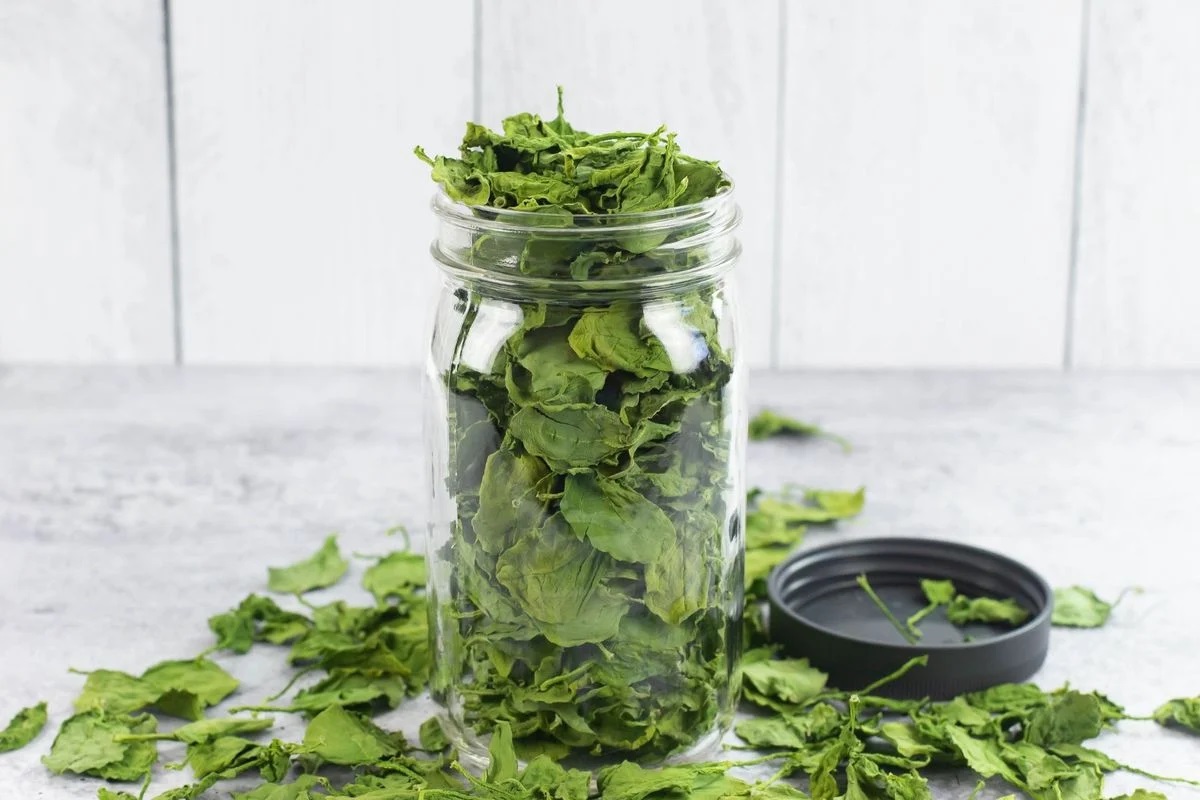
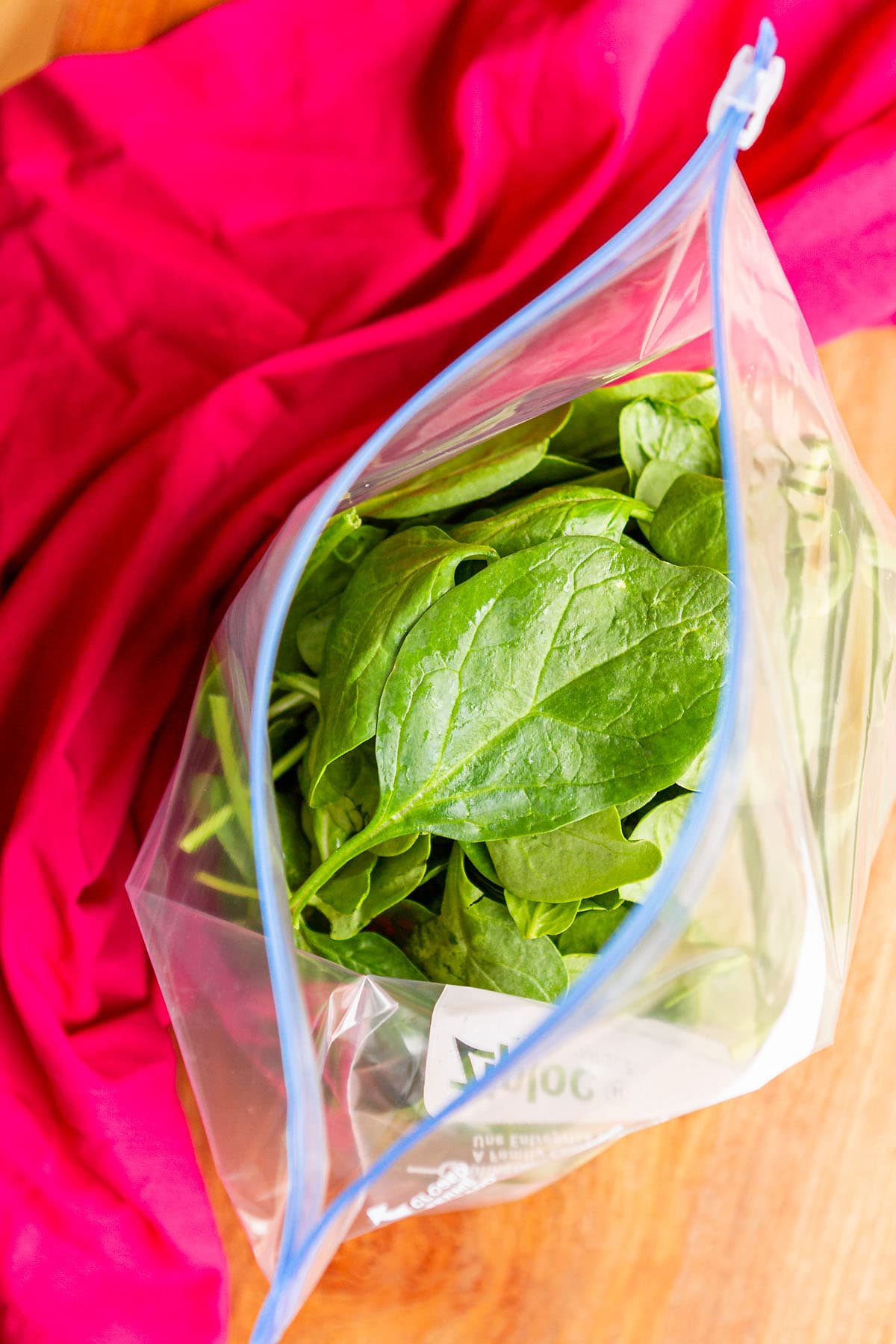
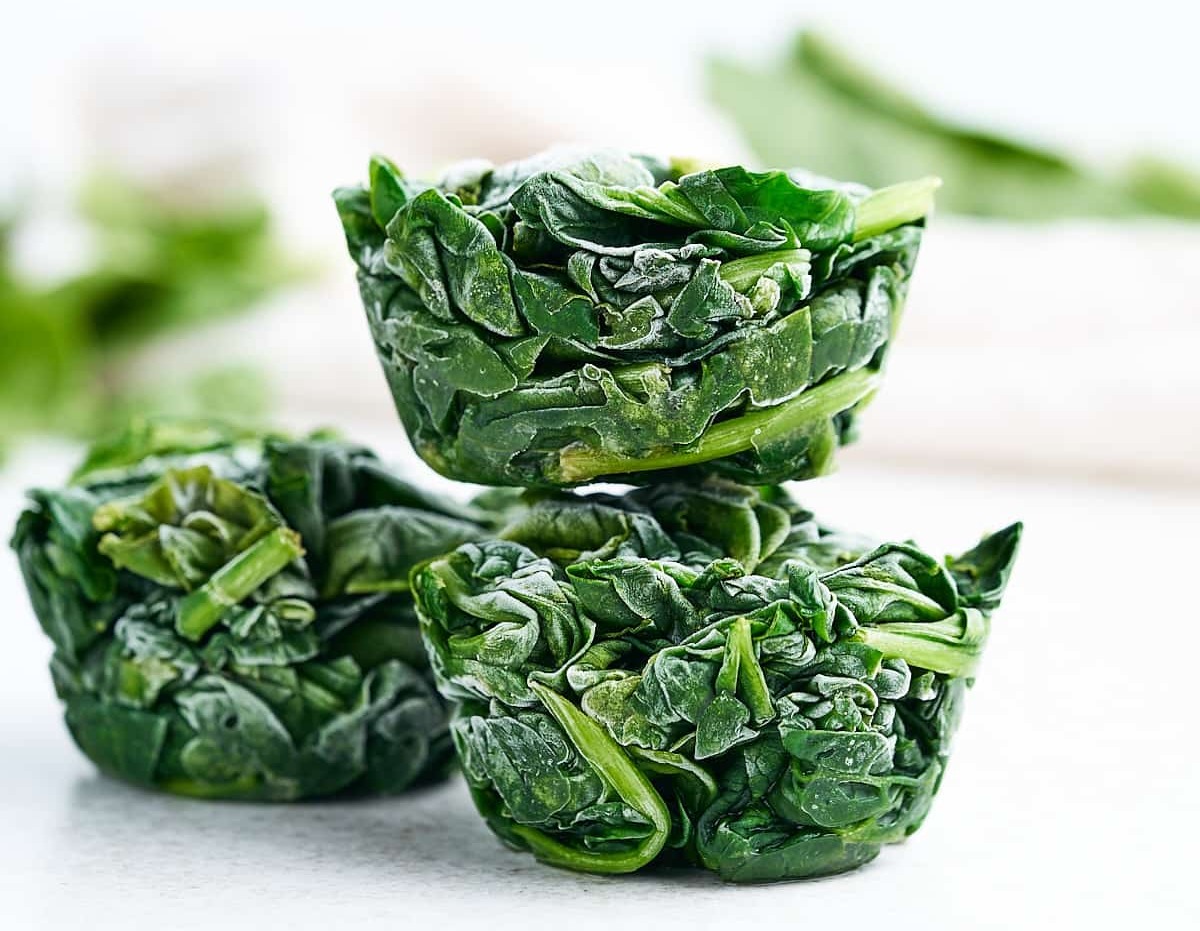
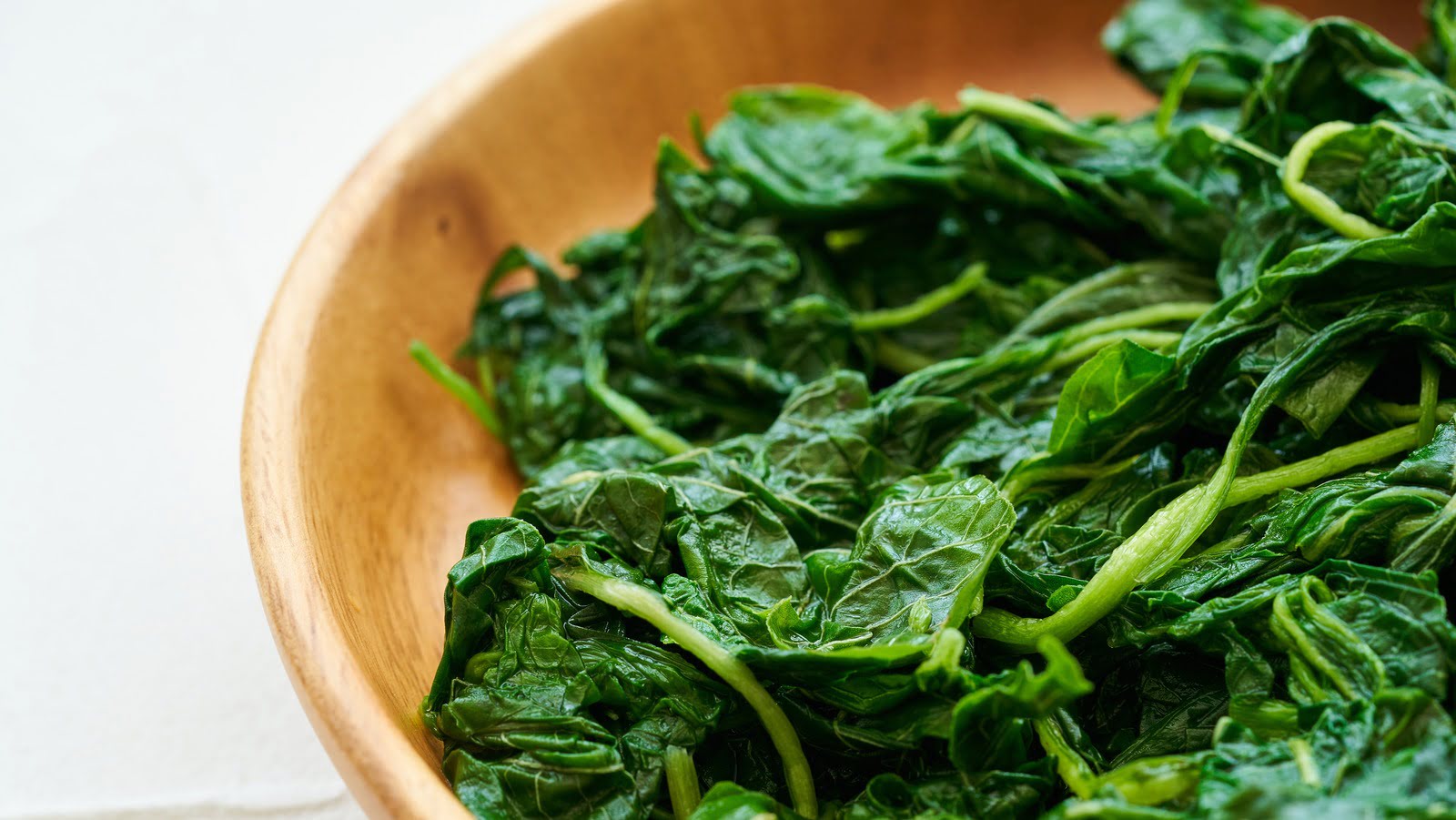

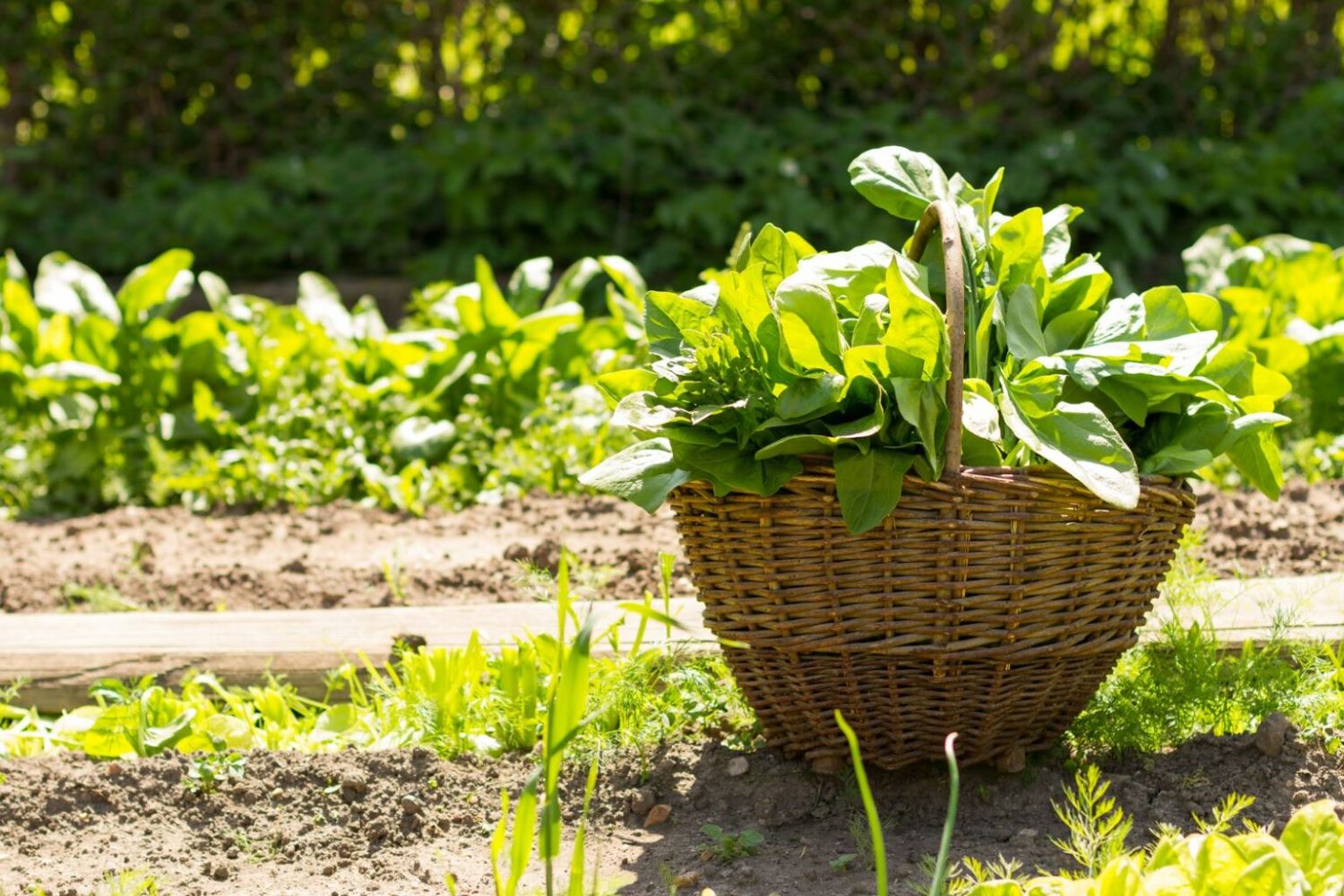



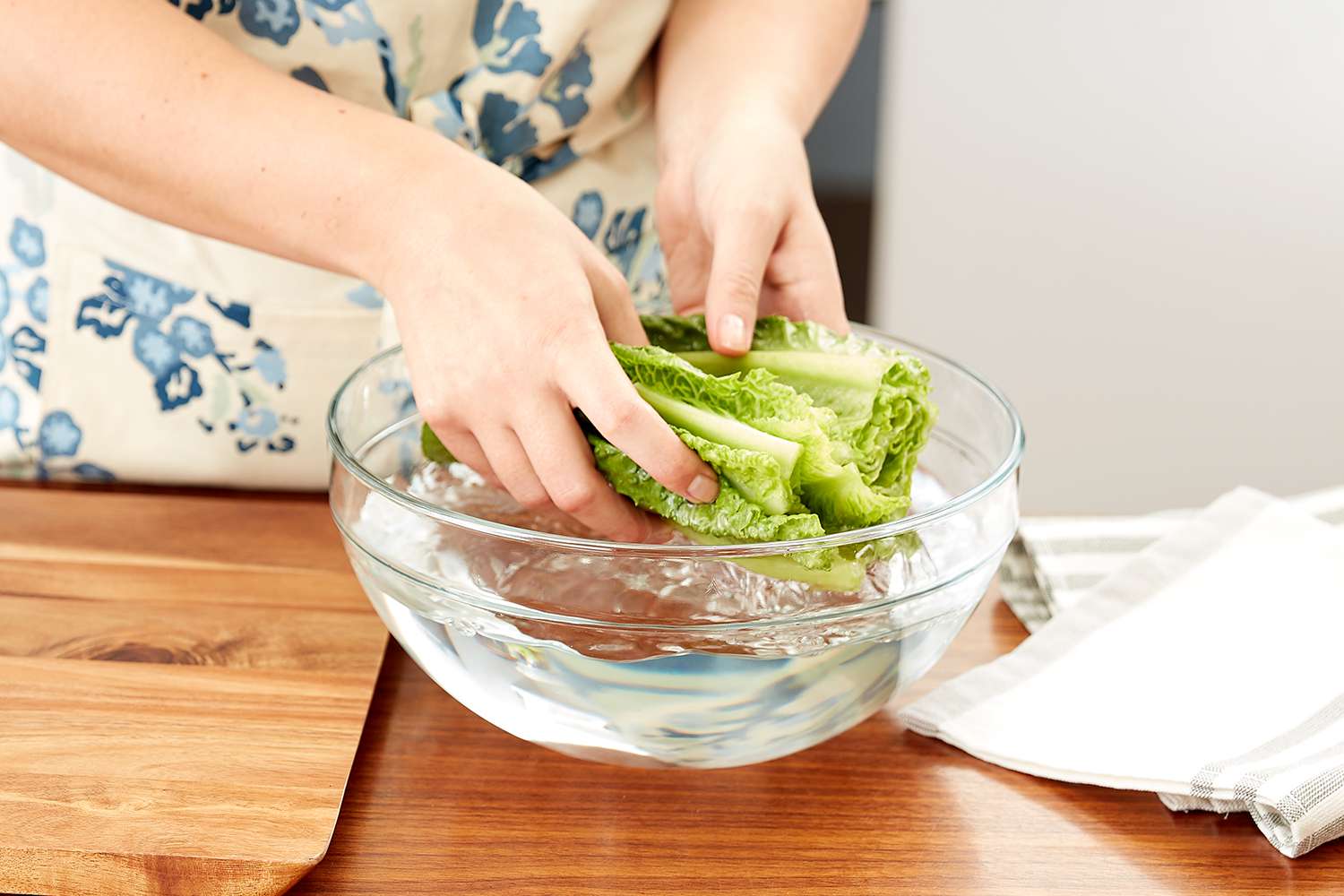
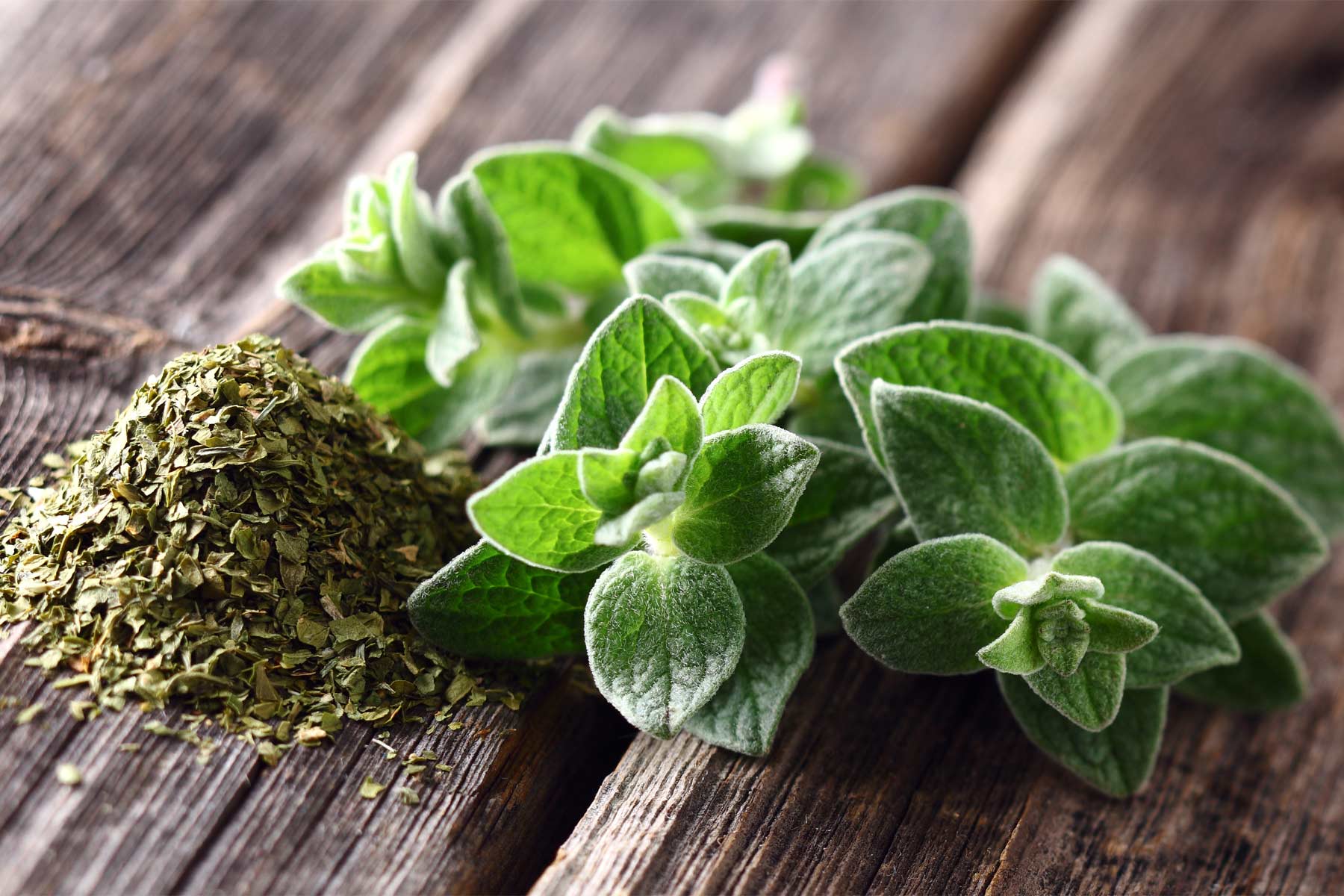

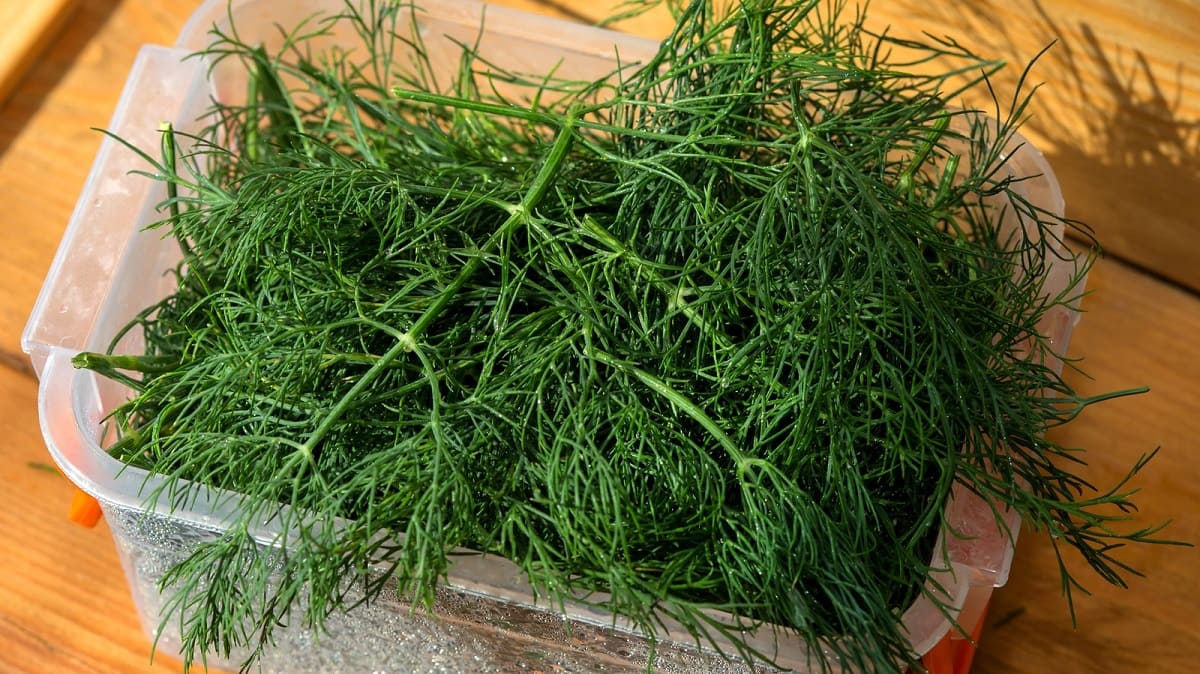

0 thoughts on “How To Store Fresh Spinach”